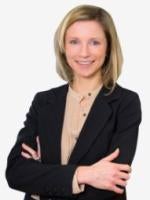The International Sustainability Standards Board (ISSB) standards have joined the climate-disclosure reporting frameworks that take a financial materiality-led approach. While the ISSB standards seek to streamline reporting schemes, the ISSB’s focus on financial materiality diverges from the European Union’s (EU) approach on double materiality. As climate-disclosure reporting is increasingly adopted, the divergent approaches to materiality continue to leave companies unsettled.
Over the past few years, businesses have become increasingly familiar with environmental, social, and governance (ESG) issues and the metrics that track them. (We provided a brief primer on these issues here.) Key ESG metrics measure topics including management of climate-related risks, for which nearly a dozen frameworks have been developed. Examples are the ISSB’s International Financial Reporting Standards (IFRS) S1 and S2 issued on June 26, 2023.
Why Do Metrics Matter?
Companies’ ESG-related claims can be scrutinized by regulators or in litigation. We provide some early examples here and here. As ESG reporting develops, many companies across the globe will be legally required to report on certain metrics. To properly report ESG metrics, organizations conduct materiality assessments to identify and understand the relative importance of specific ESG and sustainability topics to determine what information to disclose.
Takeaways for a Regulated Entity:
- Financial materiality focuses on how the environment impacts corporate outcomes; impact materiality focuses on the effect of corporate decisions on the environment; double materiality includes both.
- Financial materiality, adopted in the ISSB framework and is the approach in the proposed SEC climate disclosure rule, is more likely to gain broader acceptance in the US market.
- The differing materiality focuses could impact the ability to efficiently engage in business or even conclude acquisitions.
IFRS S1 reports on sustainability-related risk and IFRS S2 sets out specific climate-related disclosures. Many have welcomed the ISSB standards as an opportunity to streamline the often overlapping and vexing reporting schemes (see below for a visual simplification of how the ISSB standards have developed).

Photo via: AUDITBOARD
Many reporting standards focus on the concept of “materiality.” The ISSB’s focus is on meeting investors’ information needs, deeming information “material” if “omitting, obscuring or misstating [it] could be reasonably expected to influence [investor decisions].” Traditional corporate decision making has focused on material financial outcomes (financial materiality). Materiality could also mean the impact of corporate decisions on the environment (impact materiality). For example, the Global Reporting Initiative (GRI) assumes an impact-based view of materiality, focusing on organizations’ outward impacts on society and the environment rather than the inward effects of ESG factors on enterprise value. Financial and impact materiality are not mutually exclusive, and some standards require both to be considered (double materiality), such as the European Sustainability Reporting Standards (ESRS) framework. While the ISSB and ESRS differ in their materiality focus, there are pros and cons in allowing the market to use both.
Pros
Frameworks emphasizing financial materiality are more likely to gain broader acceptance in the US market (e.g. the US Securities and Exchange Commission’s (SEC) Proposed Climate-Disclosure Rulemaking centers on financial materiality). Still, the proposed rule has induced many threats to challenge the rule in court if adopted. However, allowing the US market to ease into climate-related disclosure reporting, focused on financial materiality, rather than double materiality, will bring more acceptance into a tumultuous environment — especially one complicated by the latest development of the “Anti-ESG” movement that aims to support causes in opposition to ESG values.
Cons
Maintaining multiple approaches to materiality will continue the ongoing confusion among companies in deciding which standards to report under. Moreover, some critics maintain the ISSB’s narrow focus on financial materiality may restrict the kinds and number of sustainability issues that come under corporate purview. If US companies adopt ISSB standards and EU and global companies adopt ESRS, for example, it will complicate a company’s ability to communicate using the same “language” regarding climate-risk, further separating the US and EU in their approaches. This divide could impact the ability to efficiently engage in business or even conclude acquisitions. It will also continue to complicate investor and consumer expectations, i.e. whether climate-related disclosures should focus more on a company’s impact on the environment or the impact of the environment on the company from a financial perspective. In an effort to comply with the law, apply conflicting standards, and manage potential consumer claims, companies must tread carefully in deciding if, when, and how they will engage with diverging disclosure standards, especially in light of the conflicting views of red and blue state attorneys general.
The question remains to be seen if the ISSB standards approach to materiality assessments will stand the test of time in corporate reporting or will be modified or eliminated by standards centered on double materiality.





 />i
/>i

